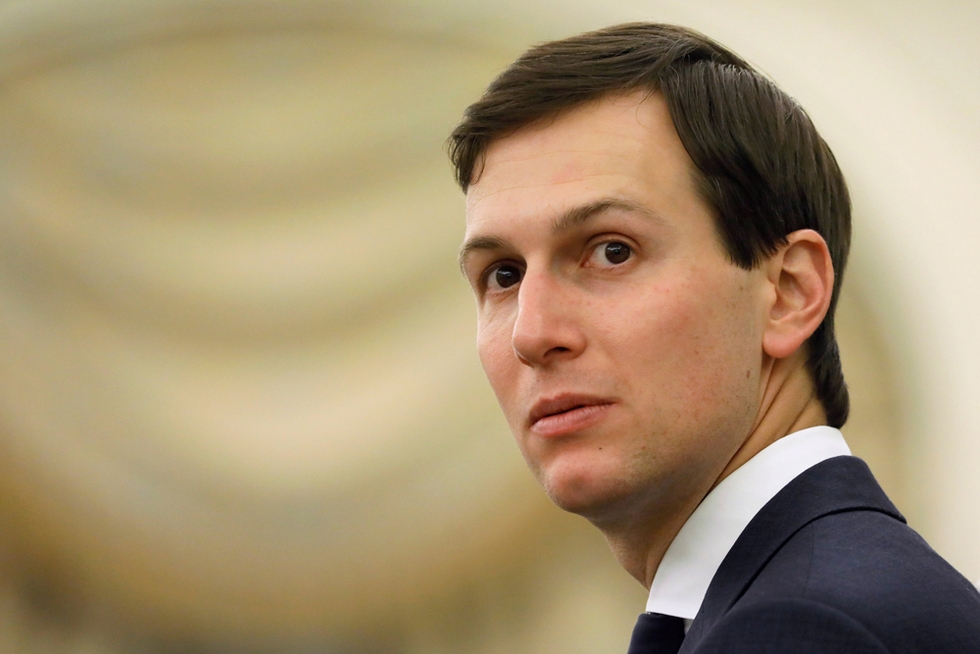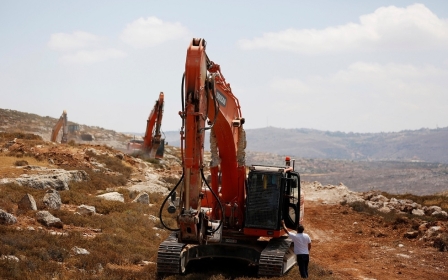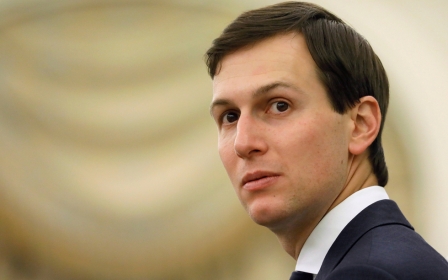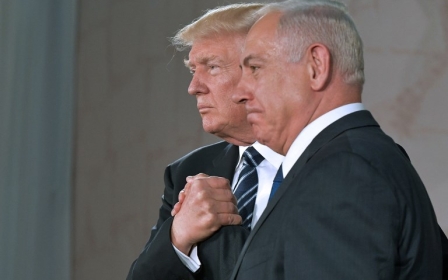Trump's son-in-law launches Middle East peace effort

President Donald Trump's son-in-law and senior adviser, Jared Kushner, held talks with Israeli Prime Minister Benjamin Netanyahu in Jerusalem on Wednesday, beginning a new US effort to revive long-fractured Middle East peace efforts.
Kushner, a 36-year-old building developer with little experience of international diplomacy or political negotiation, arrived in Israel on Wednesday morning and will spend barely 20 hours on the ground - he leaves shortly after midnight.
Video showed him giving Netanyahu, a friend of Kushner's father, a handshake and a hug as they prepared to sit down with the Israeli ambassador to Washington, the US ambassador to Israel and other senior officials for preliminary discussions.
"This is an opportunity to pursue our common goals of security, prosperity and peace," said Netanyahu. "Jared, I welcome you here in that spirit. I know of your efforts, the president's efforts, and I look forward to working with you to achieve these common goals."
Kushner replied: "The president sends his best regards and it's an honour to be here with you."
Israeli and US officials provided no information on what was to be discussed and there are no plans for Kushner to speak to the media or take any questions, maintaining the circumspect profile he has established since Trump took office.
Later on Wednesday, he will travel to Ramallah, in the Israeli-occupied West Bank, for talks with Mahmoud Abbas, after the Palestinian president breaks his Ramadan fast.
US officials are calling the trip part of an effort to keep the conversation going rather than the launching of a new phase in the peace process, saying that Kushner and Jason Greenblatt, the president's special representative for international negotiations, are likely to return often.
Greenblatt arrived in Israel on Monday for preparatory talks in both Jerusalem and Ramallah, and will remain for follow-up discussions after Kushner has departed, officials said.
Trump has described peace between the Israelis and the Palestinians as "the ultimate deal" and made it a priority since taking office. As well as receiving both Netanyahu and Abbas in the White House, he visited the region last month.
But it remains unclear what approach Trump, via Kushner and Greenblatt, plans to take on resolving one of the world's most intractable conflicts.
For at least two decades, the goal of US-led diplomacy has been a "two-state solution", meaning an independent Palestinian state living side-by-side and at peace with Israel.
But when Trump met Netanyahu in Washington in February, he said he was not fixed on two states saying, "I'm looking at two-state and one-state, and I like the one that both parties like".
Netanyahu has in the past given conditional backing to two states. But ahead of his last election victory in 2015, he promised there would never be a Palestinian state on his watch, a remark seen as an attempt to shore right-wing support.
In discussions with Greenblatt before Kushner's visit, Palestinian sources said the phrase "two state solution" had not been used.
Palestinian list of demands
Palestinian sources said that ahead of Kushner's meeting with Abbas, they had been asked to draw up a list of 12 'bullet point' demands they would want met in any negotiations.
They saw it as a helpful exercise in focusing on core elements rather than an oversimplification of a complex issue.
Trump administration officials have said that if they are going to make progress on peace, they do not want to get bogged down in process but to move rapidly on tackling what are known as "final status" issues, the complexities around Jerusalem, Palestinian refugees, water resources, security and borders.
Those issues have long been thorny problems in the multiple rounds of peace negotiations launched by both Republican and Democratic presidents since the mid-1990s. It remains unclear what new approach Trump's administration may have to untangling disputes that blend politics, land, religion and ethnicity and have defied resolution for 70 years.
Middle East Eye propose une couverture et une analyse indépendantes et incomparables du Moyen-Orient, de l’Afrique du Nord et d’autres régions du monde. Pour en savoir plus sur la reprise de ce contenu et les frais qui s’appliquent, veuillez remplir ce formulaire [en anglais]. Pour en savoir plus sur MEE, cliquez ici [en anglais].




